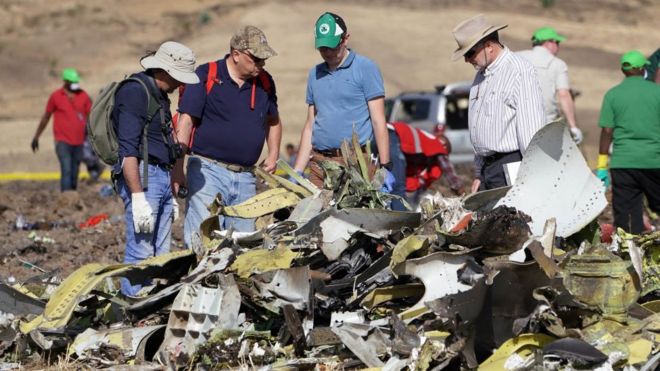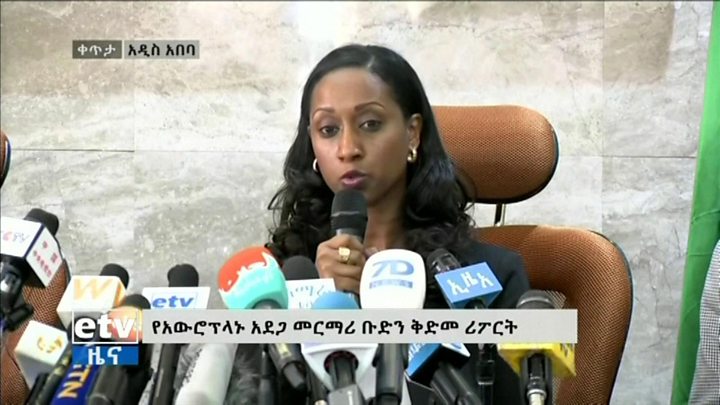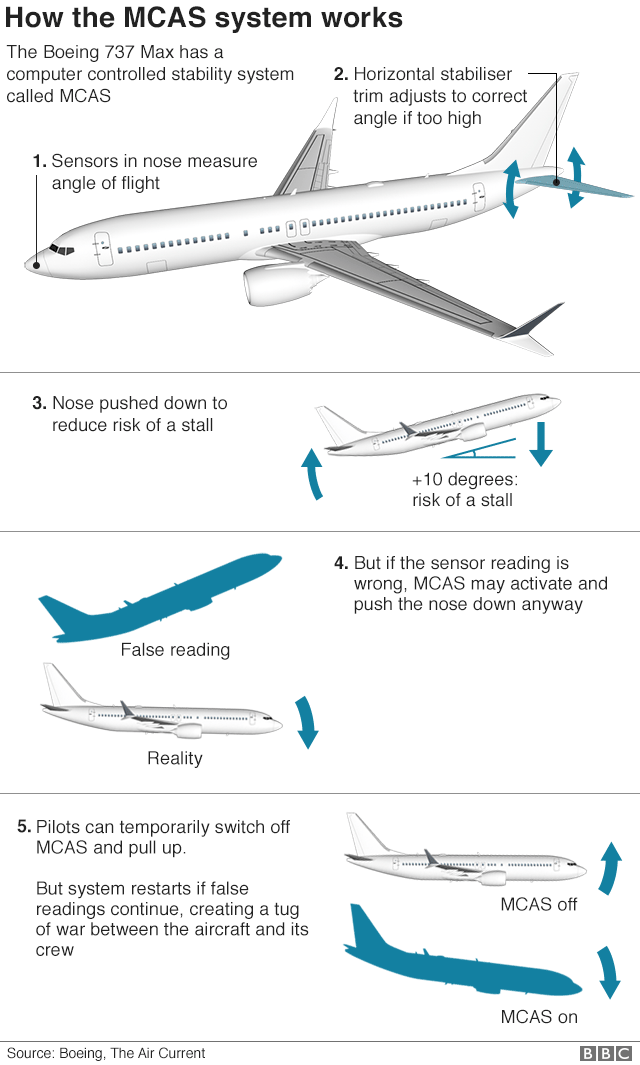
The Ethiopian Airlines plane that crashed last month nosedived several times before it hit the ground, a preliminary report has said.
Pilots “repeatedly” followed procedures recommended by Boeing before the crash, according to the first official report into the disaster.
Despite their efforts, pilots “were not able to control the aircraft”, Transport Minister Dagmawit Moges said.

Flight ET302 crashed after take-off from Addis Ababa, killing 157 people. This was the second crash of a Boeing 737 Max aircraft in five months.
Last October, Lion Air flight JT 610 crashed into the sea near Indonesia killing all 189 people on board.
“The crew performed all the procedures repeatedly [that were] provided by the manufacturer but were not able to control the aircraft.”
Ms. Dagmawit said:
Her comments were based on a preliminary report into the crash, which has not been published yet, but could be released by the end of the week.
The 737 Max family of aircraft was grounded following the Ethiopian Airlines crash, a move affecting more than 300 planes.
cause of the crash according to report ?
The preliminary report did not attribute blame for the crash and did not give detailed analysis of the flight.

However, the report suggested that Boeing review the aircraft control system and said aviation authorities should confirm the problem had been solved before allowing the 737 Max back into the air.
In a statement, the chief executive of Ethiopian Airlines, Tewolde GebreMariam, said he was “very proud” of the pilots’ “high level of professional performance”.
“It was very unfortunate they could not recover the airplane from the persistence of nosediving,” the airline said in a statement.
Investigators have focused their attention on the Manoeuvring Characteristics Augmentation System (MCAS) – software designed to help prevent the 737 Max from stalling.
The software reacts when sensors in the nose of the aircraft show the jet is climbing at too steep an angle, which can cause a plane to stall.

Boeing has been working on an upgrade of the MCAS software since the Lion Air crash.
It has said the system can be disabled – allowing pilots to regain control if there appears to be a problem.
But the latest comments from Ethiopian officials suggest that pilots could not regain control, despite following procedures recommended by Boeing.
What has Boeing done since the crash?

Boeing has issued guidance to pilots on how to manage MCAS.
It plans to install an extra warning system on all 737 Max aircraft, which was previously an optional safety feature.
It is also revising pilot training to provide “enhanced understanding of the 737 Max” flight system and crew procedures.
The planemaker says the upgrades are not an admission that MCAS caused the crashes.